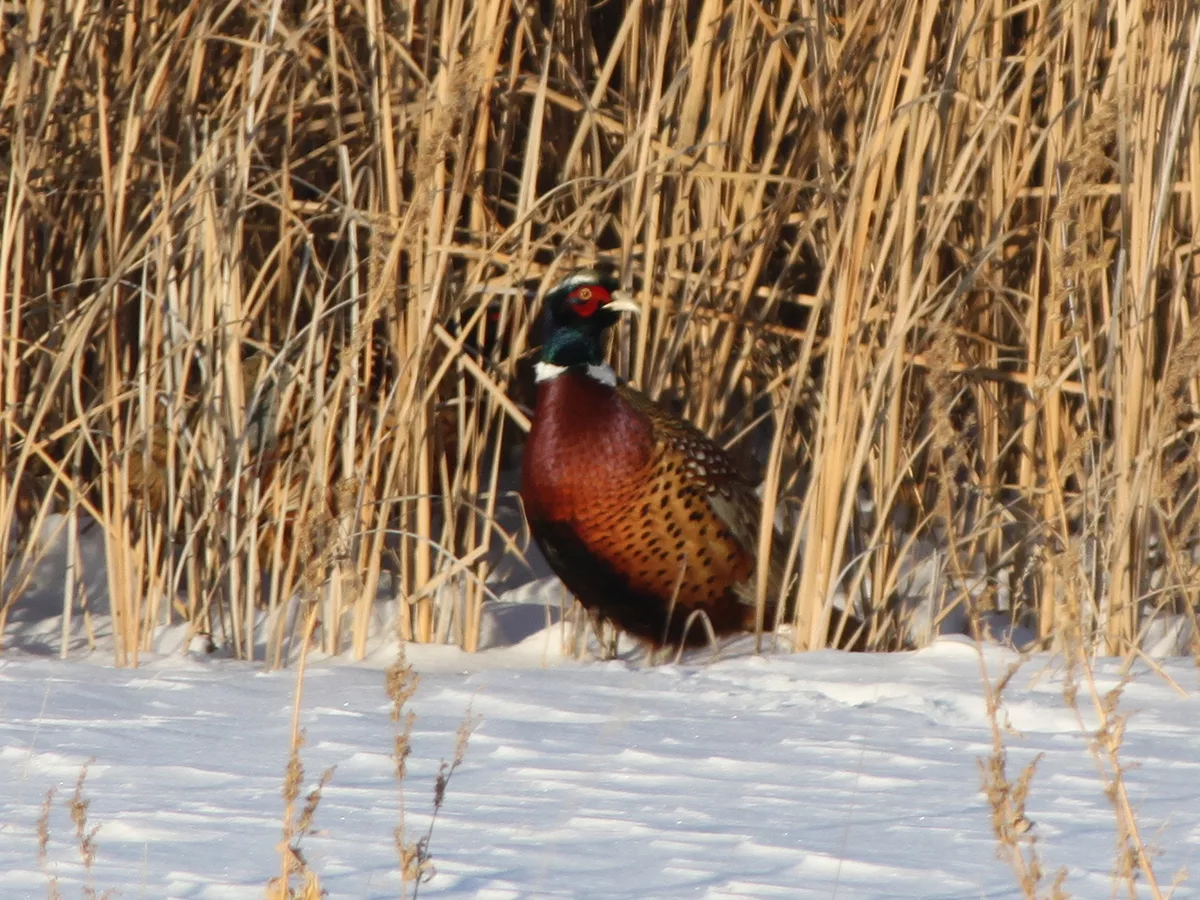
The ringneck pheasant, particularly over the past 50 years, has served as a greater reminder of the importance of habitat and marginal lands than some of the biggest catastrophes in the history of the upper Midwest. Simonson Photo.
By Nick Simonson
No other upland bird provides a greater lesson in the importance of varied and secure habitat than the ringneck pheasant, and in that process, reinforces some vital protections those areas of marginal space have not only for wildlife but also for people. Needing open grassy stretches in which to raise its young and quickly escape predation and deep cover like sloughs to survive the challenging winters of the upper Midwest, the habitat required throughout the birds’ life cycle runs from thin to thick. But each set-aside acre helps not only with the pheasant’s survival in a foreign land but also with its people’s well-being from soil preservation, to flood protection, to clean water and more.
Prior to the 1900s and long before the first pheasants ran through the region, much of the upper Midwest was native prairie; a system of grasses, flowers and other plants that provided abundant forage for megafauna such as bison and pronghorn and cover for native birds like sharptailed grouse, meadowlarks and other game both big and small. The root systems of these seas of grass also locked the fertile topsoil in place, preventing its loss in the blowing winds across the northern prairies. By the time the dustbowl of the 1930s rolled around, the second or third generation settling on the plains quickly saw firsthand (but perhaps didn’t learn in the moment) how the loss of those grasses impacted soil health and retention. The most optimistic estimate now puts native prairie – that is grassland as the first peoples of North America knew it and the first white settlers found it – at around five percent of its initial amount.
And like islands in those spaces amidst the oceans of blowing grass, depressions caused by the movement of glaciers thousands of years ago created potholes which held vital water for wildlife such as ducks and geese that migrated through the plains states eons before lines were drawn on maps. These leftover stretches filled with cattails caught the flow from melting winter snows and spring rains and held them, providing places for waterfowl to live and raise their young as a slow drain of that water occurred throughout the subsequent months. As these natural sponges have been removed from the landscape, those people on the land now seven or eight generations down the road have borne the brunt of the consequences caused by the loss of these natural stops in the prairie water cycle. With no buffer to hold and absorb water – or worse, drains cut and pipes laid in the approximate location of where the sloughs once were to carry it away – deluges flow directly into the nearest river at speeds ten to 100 times faster, increasing flooding risk and severity felt at its worst in downstream areas of major rivers.
The introduction of the ringneck pheasant, spurring the growth of multiple habitat focused groups, has highlighted the need for both these types of cover that benefit the birds. Native grasses, or their replacements in modern grassland plantings, are necessary for nesting, chick rearing and loafing cover which keeps pheasants hidden from avian predators above and allows for a fast exit when a ground-based predator approaches. The needs for stands of wetland vegetation such as cattails, reeds and cane also provide that protection, but additionally create pockets where pheasants can overnight and stay warm on even the chilliest winter nights and through snowier seasons. Species such as whitetailed deer, ducks, and every other game and non-game species on the plains benefit too from the same restoration and preservation of those sloughs.
Thus, this immigrant bird – one that takes the summer eagle’s place on the cover of sporting goods advertisements and has spurred the creation of multi-million dollar organizations with hundreds of thousands of members – has called more attention to the needs of habitat than the forgotten dust storms of ninety years ago which bankrupted families and the fading memories of downtowns under ten feet of water which cost cities and taxpayers billions. If that’s what one popular game bird imported from Asia can do, we as hunters, non-hunters, landowners, taxpayers and citizens in general should be all for such a reminder on the importance of habitat and how its presence – and absence – affects us all.
Simonson is the lead writer and editor of Dakota Edge Outdoors.
